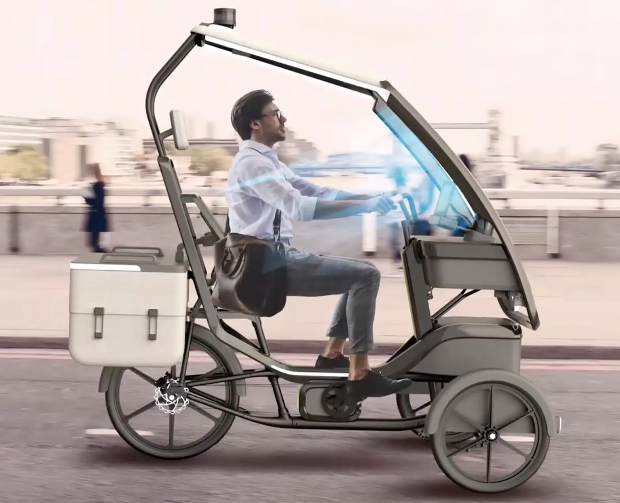Last Friday was the first time Luksic Scholars has collaborated with ChileMass Alliance with a webinar that rendered an intriguing conversation about the challenges of urban micro-mobility and new technologies that connect Chile and the Commonwealth of Massachusetts in the United States.
Have you ever thought about reimagining new neighborhoods or what the future of mobility will look like, and what those challenges might be? This was the topic of discussion during last week’s virtual conversation, organized by Luksic Scholars and ChileMass, in which two Luksic scholars were featured: Isabel Brain (Urban Sociologist, Ph.D. (c) in Urban Planning from University College of London) and Luis Valenzuela (Doctor of Design from Harvard University Graduate School of Design).
Pablo Allard, Dean of the Faculty of Architecture and Arts, Universidad del Desarrollo, moderated the event and started us off by introducing us to the first speaker: Michael Lin (Ph.D (c) and Master of Science from the MIT, research lead for mobility projects at the MIT Media Lab City Science GroupMedia).
INNOVATION & THE FUTURE: Michael showcased how transportation innovations will re-shape our future mobility landscape and will help solve problems like pollution and parking in big cities. Some of these concepts include CityCar, MIT RoboScooter, GreenWheel (a wheel that can easily turn a bike into a motor device), a self-driving car (announced by Google), and most notably, the MIT PEV (Persuasive Electric Vehicle). PEV is an electric tricycle invented by Michael himself, alongside his team at MIT; it aims to solve last-mile transportation and improve mobility system efficiency and roadside safety [reference image below].

Through this extensive research, Michael hopes that we all are provided with the right tools and knowledge so we can build and contribute to our own auto-mobility as we move forward; merging ideas of affordability, autonomy, and mobility.
WHAT ARE THE CHALLENGES? Isabel took a different spin by presenting a realistic picture of what the here-in-the-now looks like for cities and mobility with a case study of Santiago, Chile.
She acknowledged the current COVID situation and how this has produced a window of opportunity to introduce long, overdue changes to cities but now with a certain urgency. And although this may be an opportunity, it certainly comes with its challenges. How do we find the middle ground between a large city/population and social distancing?
In most LATAM cities, there are dense inner-city areas mixed with a high dependency on public transportation and extreme social segregation – and Santiago is no exception. Isabel proposed to invest in a city-wide network of cycling paths, distribute shared bikes and scooters, widen sidewalks, and incorporate more social spaces where people can meet safely, such as parks and public libraries.
HERE ARE THE FACTS – THE “FIRST MILE”: While Michael talked about technology, innovation, and robots, and Isabel discussed the density of neighborhoods and its challenges, Luis wanted to hit on a third point which is “what do you need?”
His all-encompassing presentation was titled “Only 9%,” during which he referenced what Michael was remarking about the “last mile” and said, “let’s talk about the first mile: what do we have at our doorsteps? What is the proximity you’re looking for when you think about walking your dog, going to sports practices, doctor’s appointments…?”.
Luis revealed an astonishing fact: only 9% of Santiago’s municipal population is within 15 minutes walking to public and private amenities and services. A 15-minute walk is approximately 1 km or 1 mile in distance, thus where the “first mile” comes into play. In other words, only 9% (of a population of about 7 million people) can access their basic needs within a one-kilometer radius. Luis said, “this is a failure to our neighborhoods and to having abandoned one of the most needed networks in this context of what our livelihood is.”
THOUGHT-PROVOKING Q&A: This led to a nice transition to the finale of the event: a thought-provoking Q&A during which the panelists and webinar participants discussed potential solutions for urban mobility, delving deeper into the challenges we’re going to face, and contemplating whether or not COVID is ultimately going to be a burden or lead to more opportunities within this context.
